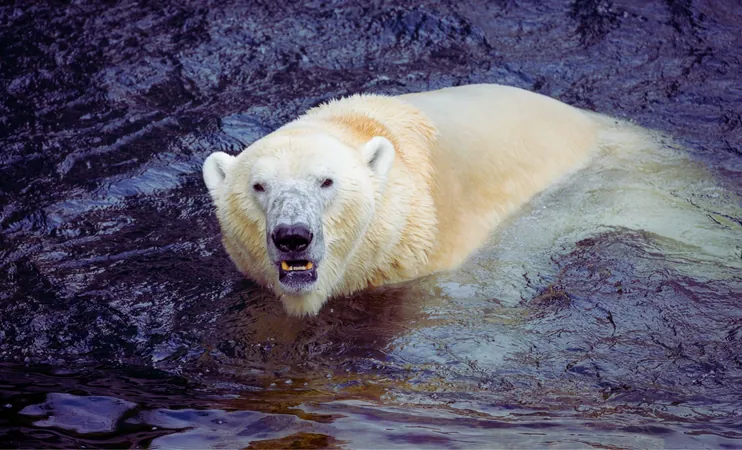
Meet the Arctic's TRUE Apex Predator: It's Not the Polar Bear!
2025-07-25
Author: Olivia
When we picture the Arctic’s mightiest predator, the majestic polar bear often springs to mind. These iconic giants navigate the frozen landscapes, skillfully hunting seals in one of Earth’s harshest climates. But hold on to your hats! A new groundbreaking study reveals that lurking beneath the icy waves is a surprising contender for the title of apex predator—and it’s a far cry from the mammal we all admire. Prepare to be astonished by the unassuming sea star!
Sea Stars: The Arctic's Unlikely Apex Predators
For decades, the polar bear’s reign as the definitive apex predator in the Arctic has gone unquestioned. However, research from Laval University in Canada, recently published in the journal Ecology, dramatically challenges this long-held viewpoint. Investigating the food webs around Southampton Island, scientists discovered that certain sea stars, particularly from the Pterasteridae family, are actually the true rulers of the seafloor ecosystems.
These sea stars hunt and scavenge much like polar bears do on land. They are opportunistic feeders, not only preying upon other marine life but also cleaning up dead organisms that settle to the ocean floor. In many ways, they play an identical role in recycling nutrients and sustaining their ecosystem as polar bears do when they feast on whale carcasses during the brutal Arctic winters.
Unraveling the Complex Arctic Food Web
When we think of a food web, it's easy to visualize a straightforward chain: plant life at the bottom and apex predators like polar bears at the top. But the reality is astonishingly complex, especially in marine habitats. This recent study uncovers that the Arctic’s benthic (seafloor) food web is just as intricate as the pelagic (open water) system.
In this hidden world, apex predators still reign supreme. While the polar bear dominates the surface waters, sea stars like Pteraster militaris and Diplopteraster multipes rule the depths. These formidable creatures consume high-trophic organisms such as sponges and sea anemones, allowing them to carve out a unique and powerful niche within the ocean's food chain.
Why Benthic Predators Matter
The revelation that sea stars can be classified as apex predators is not merely academic; it has significant implications for marine biology and conservation efforts. Historically, the benthic zone was perceived as less intricate than its open-water counterpart, often regarded as a simple ecosystem dominated by lower-level organisms.
However, this new research redefines our understanding, showcasing that the seafloor is teeming with life and complexity, complete with its own essential predators like sea stars. It's a reminder that every layer of the Arctic ecosystem plays a crucial role, and protecting these often-overlooked creatures is vital to maintaining the health of our oceans.









 Brasil (PT)
Brasil (PT)
 Canada (EN)
Canada (EN)
 Chile (ES)
Chile (ES)
 Česko (CS)
Česko (CS)
 대한민국 (KO)
대한민국 (KO)
 España (ES)
España (ES)
 France (FR)
France (FR)
 Hong Kong (EN)
Hong Kong (EN)
 Italia (IT)
Italia (IT)
 日本 (JA)
日本 (JA)
 Magyarország (HU)
Magyarország (HU)
 Norge (NO)
Norge (NO)
 Polska (PL)
Polska (PL)
 Schweiz (DE)
Schweiz (DE)
 Singapore (EN)
Singapore (EN)
 Sverige (SV)
Sverige (SV)
 Suomi (FI)
Suomi (FI)
 Türkiye (TR)
Türkiye (TR)
 الإمارات العربية المتحدة (AR)
الإمارات العربية المتحدة (AR)